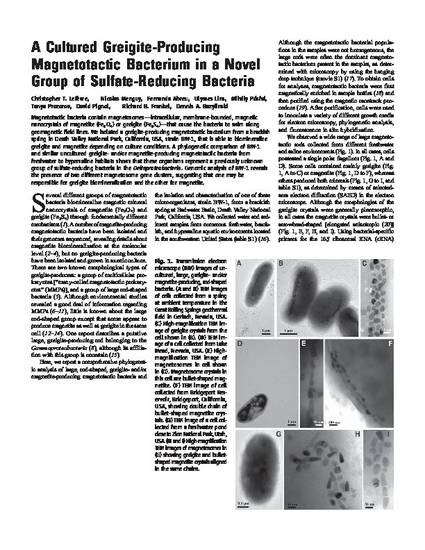
Magnetotactic bacteria contain magnetosomes—intracellular, membrane-bounded, magnetic nanocrystals of magnetite (Fe3O4) or greigite (Fe3S4)—that cause the bacteria to swim along geomagnetic field lines. We isolated a greigite-producing magnetotactic bacterium from a brackish spring in Death Valley National Park, California, USA, strain BW-1, that is able to biomineralize greigite and magnetite depending on culture conditions. A phylogenetic comparison of BW-1 and similar uncultured greigite- and/or magnetite-producing magnetotactic bacteria from freshwater to hypersaline habitats shows that these organisms represent a previously unknown group of sulfate-reducing bacteria in the Deltaproteobacteria. Genomic analysis of BW-1 reveals the presence of two different magnetosome gene clusters, suggesting that one may be responsible for greigite biomineralization and the other for magnetite.
Available at: http://works.bepress.com/rfrankel/183/
